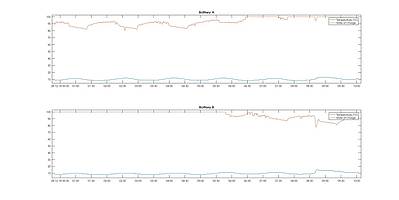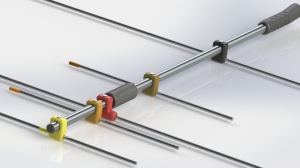Dramatic power reduction on 23cm for Belgium radio hams

A Galileo satellite – image credit ESA
The Belgium regulator BIPT has proposed cutting to just 20 watts the permitted power level for the Amateur and Amateur-Satellite allocations in 1260-1300 MHz which is to be used by the Galileo GNSS / GPS constellation.
A Google translation of the UBA post reads:
On December 18, the BIPT website provides BIPT consultation on the Frequencies, Power and Transmission modes that may be used by radio amateurs.
This consultation was already announced at the BIPT meeting with the recognized associations of September 28 and should provide a framework for the introduction of the CEPT Novice license in Belgium.
The most important part is the Appendix 1 which establishes the Frequency bands and technical characteristics allowed for the different categories of radio amateur licenses.
For holders of a HAREC license (class A operating certificate), there are only changes to the transmission power (usually in our favor):
• On most bands between 1.81 MHz and 440 MHz, the permitted power is 1500 W. Exceptions are 1.85-2.00 MHz (10 W), 5.3515-5.3665 MHz (15 W EIRP), 50-52 MHz (200 W), 69.95 MHz (10 W). EIRP), 70.1125-70.4125 MHz (50W) and 433.05-434.79 MHz (200W EIRP for (D-) ATV, 200W transmit power for other modes). On the bands above 1 GHz the permissible power is increased to 200 W, with the exception of 1260-1300 MHz (20 W). The special license for higher capital expires, but to perform exceptional experiments one can still submit a motivated request to temporarily use a larger capital. It is allowed to own devices that are capable of supplying a power up to twice the permitted maximum power.
The holders of the newly introduced CEPT Novice license (class B operating license) have access to almost all bands between 1.81 MHz and 440 MHz (except 5.3515-5.3665 MHz, 69.95 MHz and 70.1125-70.4125 MHz). The permitted transmission power is 100W at HF and 6 meters and 50 W at 2 m and 70 cm. All classes of broadcast (modes) are allowed with the exception of D-ATV.
For the holders of a basic license (class C operating license) the changes are greater:
• The permissible transmission power is limited to 10 W, but the use of devices up to 100 W transmission power remains permitted (provided that the power is limited to 10 W). The use of external power amplifiers is not permitted.
• The use of the 17 m band (now 18.080-18.168 MHz), 12 m band (now 24.900-24.990 MHz) and 6 m band (now 50.125-52.000 MHz) is no longer allowed.
• The 20 m band is expanded (14,000-14,150 and 14,250-14,350 MHz), this is 65 kHz extra (14,080-140150 MHz).
• The 15 m band is expanded (21,000-21,150 and 21,320-21,450 MHz), this is 90 kHz extra (21,000-21,040 and 21,100-21,150 MHz).
• The 10 m band is expanded (28,000-29,700 MHz), this is 40 kHz extra (28,000-28,040 MHz).
• The permitted classes of broadcast (modes) do not change, everything modes except (D-) ATV remain allowed.
The full text of this consultation can be found on
https://www.ibpt.be/public/files/nl/22691/Raadpleging_RAM_2018-12-18.pdf
Everyone has the right to respond to the content of this consultation until January 18 and to propose changes.
The UBA will certainly do this and invites all members to send their comments and proposals for January 5 to ON7YD ( ( on7yd [at] uba [dot] be ) ). Anyone who wants to respond in their own name can find the procedure for this at
https://www.ibpt.be/nl/consumenten/radio/radioamateurs/raadpleging-op-verzoek-van-de-raad-van-het-bipt-met-betrekking-tot-het-ontwerp-van-besluit-van-de-raad-van-het-bipt-betreffende-de-frequenties-vermogens-en-transmissiemodi-die-mogen-worden-gebruikt-door-de-radioamateurs
UBA in Google English https://tinyurl.com/BelgiumUBA
2006 article Potential Interference To Galileo From 23cm Band Operations by Peter Blair G3LTF.
The Galileo constellation is expected to be fully operational by 2020.
http://www.southgatearc.org/articles/galileo.htm
Get The Details…
m5aka
AMSAT-UK





 Unfortunately, our uplink success rate is very poor, which currently prevents these experiments. In the precursor mission UWE-3, it was found that the reason for this is very likely a substantial noise floor at the used frequency range. For this reason, we filed a request for the change of our radio frequency to 435.600 MHz with IARU, which has already been approved.
Unfortunately, our uplink success rate is very poor, which currently prevents these experiments. In the precursor mission UWE-3, it was found that the reason for this is very likely a substantial noise floor at the used frequency range. For this reason, we filed a request for the change of our radio frequency to 435.600 MHz with IARU, which has already been approved.




